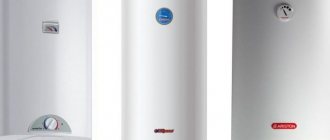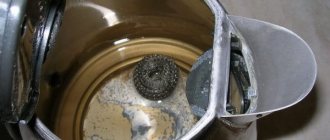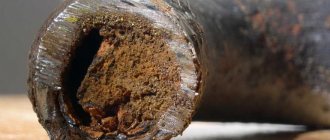You can drink! 5 ways to purify tap water at home
There are a lot of completely reliable household filters for water purification that will solve the problem. These filters for drinking water, which are built into the sink, faucet attachments, filter jugs, installations for pre-purification of water throughout the apartment. But when the filter fails, and the problem needs to be solved at least for a while, we remember simpler ways to purify tap water.
Advocacy
Chlorinated tap water tastes and smells unpleasant. But chlorination is necessary to neutralize microorganisms present in the water. To neutralize microorganisms present in water, it is chlorinated. It is not recommended to drink chlorinated water; chlorine has the ability to accumulate in the body and, when boiled, forms very harmful chemical compounds. The effect of chlorine can be neutralized by settling the water. Simply pour tap water into a large container and leave for 7-8 hours. Impurities of heavy metals and chlorine compounds will evaporate during this time. Important! Use ¾ of the settled water for drinking and food, discard the rest.
What are chlorides
One of the indicators that you definitely need water purification is the presence of hydrochloric acid salts in it, i.e. chlorides The sources of their appearance in your well water can be igneous rocks with chlorine-containing minerals (chlorapatite, sodalite, etc.), as well as salt-bearing deposits (halite). It is important to understand that the presence of sodium, magnesium and calcium salts in ground and artesian waters is natural as a result of volcanic emissions or the cycle of precipitation with soils. Of course, chlorides can also appear in water for man-made reasons - for example, during the discharge of household wastewater at or near water intake points.
ICE FILTER
A simple method of preparing melt water at home is suitable for those who have a spacious freezer. Place cold water in plastic bottles in the freezer and wait until about half of it is frozen. In the middle of the volume there remains unfrozen water, which is poured out. Ice is thawed and used for drinking. The idea behind this method of water purification is that pure water freezes first, leaving most of the impurities in solution. Even sea ice is mostly composed of fresh water, despite the fact that it forms on the surface of a salty body of water. It is important to know: you can only use water that produces clear ice for food. If the ice looks cloudy, the water from it is saturated with harmful substances. Therefore, doctors recommend only clear, clean ice to defrost and drink. Melt water from it is very beneficial for the skin, so you can actively use it for washing.
Cleaning methods
To get tasty and healthy water, it must be purified from chlorine and its compounds with other substances (dyes, surfactants, ammonia, petroleum products, phenols). The most commonly used methods are:
- Method of settling , which is the most accessible method. Standing for 30 minutes reduces the amount of dissolved chlorine by almost half. The plus and minus is that it does not require costs. The disadvantage of the method is that during settling, harmful chlorine compounds, which are found in water in the form of salts, do not evaporate.
- This is a method of boiling water. Boiling also partially removes chlorine, and the water must be boiled for at least 10 minutes. The advantage of the method is its efficiency, but there is a big disadvantage - when boiling, chlorine, interacting with organic substances, forms dioxin. This is a dangerous and carcinogenic poison that does not dissolve in water.
- Water purification with ozone , in which water is saturated with oxygen. The ozone required for water treatment is produced in the installation itself, and the residual ozone is converted into oxygen. Ozone binds harmful chlorine compounds dissolved in water and converts them into suspensions, which are retained on the filter. The advantage of the method is its environmental friendliness, simplicity, reliability, as well as the unlimited validity period of ozone filtering equipment.
- Reverse osmosis method , which uses reverse osmosis membranes. The advantage of the method is that the water is purified from chlorides by 99%. The disadvantage of this method is that water purification requires high water pressure to pass water through the membrane.
- Purification by filtration through activated carbon , which removes free chlorine and chlorine compounds. The advantage of the method is its simplicity and cost-effectiveness. The disadvantage of this method is that, as they are used, carbon filters become colonized with colonies of bacteria, for which coal is a favorable environment for development. Therefore, the carbon filter must be periodically cleaned (rinsed with hot water or steam).
- Cleaning with filters containing granular materials from dissimilar metals. The advantage of this method is that such filters do not become clogged with bacteria. The downside is that the price of the filter is high due to the cost of the composition of dissimilar metals.
- Cleaning using UV radiation , which is used recently and is becoming increasingly common. The costs of installing such equipment can be compared with the costs of carbon filters, and this is the advantage of the method. Another advantage of the method is that UV radiation does not allow bacteria to multiply. The disadvantage of this method is the high energy consumption.
- Purification with ion exchange resins , in which water is passed through a filter consisting of an ion exchange resin. The operating principle of such filters is to replace existing chlorine compounds with salts containing sodium ions. The advantage of the method is that it 100% purifies the water from chlorine, the disadvantage is that you always need to enrich the cartridge with salts containing sodium ions.
Silicon enrichment
Silicon has strong bactericidal properties, in fact it is the best natural water filter, but the question is - where to get it? Silicon can be purchased at some pharmacies or ordered from an online store. Its cost is not high - 230−250 rubles per 150 g. In addition, silicon also has antibacterial, anti-inflammatory, bactericidal properties, helps improve metabolism, has a beneficial effect on the functioning of the gastrointestinal tract, preventing the occurrence of pathologies, and promotes the rapid removal of toxins from the body , toxins, carcinogens and other harmful substances. Before using silicon for the first time, you must rinse it thoroughly with running water, then add water and leave for 2-3 days. You need to drink in small portions, at least 2-3 glasses per day. Periodically (once a week) the crystals must be washed to remove any deposits that have formed.
Why is excess chloride dangerous?
An increased content of chlorides is a rather serious problem, since at high concentrations such chemical compounds do not have the best effect on the human body and domestic animals. Drinking water that is overly chloride has an unpleasant salty taste, since sodium (the most common cationic base) in combination with chlorine leads to increased formation of table salt.
Possible consequences for the body of long-term consumption of drinking water with a high content of chlorides:
- Negative effects on the gastrointestinal tract (in particular, the mucous membranes of the stomach, esophagus and intestines). Increased likelihood of developing gallstone disease.
- Deterioration in the quality of digestion.
- Increased risk of developing diseases of the genitourinary system (including neoplasms, as well as urolithiasis).
- Changes in the functioning of the circulatory system. Risk of developing hypertension.
- Regularly high load on the kidneys. Risk of developing kidney stones.
However, the negative impact on the human body is not the only problem that poor water quality sooner or later provokes. Chloride in water is the cause of corrosion and the appearance of stains on the walls of pipes, heating and plumbing fixtures, heat exchangers, individual heating boilers, as well as other expensive equipment. Other possible consequences include a significant decrease in heat output from heating radiators and, as a result, an increase in utility bills during the cold season.
Activated carbon cleansing
Activated carbon is included in household bulk filters for water purification. This is an effective water purifier, after which tap water tastes and smells better. since coal absorbs almost all harmful substances found in tap water. To purify water using activated carbon, you need to place a homemade filter on a container of water in the form of a fabric or gauze bag filled with activated carbon - powder, granular or in tablets (the tablets must first be crushed). True, such an improvised filter cannot be used for a long time; it requires replacement after a few days.
Activated carbon
The rule is simple: if you want to buy a water filter against chlorine, then it must have a filter cartridge with activated carbon. The more such cartridges, the better, the longer the system resource. For example, when they talk about water with a distinct, i.e. very strong smell of chlorine, then 2 out of 3 cartridges should be with coal.
The classic combination for flow filters is as in the figure above: mechanical cleaning 10, 5, or 1 microns - cartridge with granular carbon - cartridge of pressed carbon. All! Such a filter will provide normal water for drinking and cooking.
Correct coal
Why activated carbon? Because it is an affordable adsorbent, the raw materials for which are natural materials. Like a sponge, it absorbs chlorine and other substances that negatively affect water quality. Coal has a certain sorption capacity, after which it can not only stop absorbing the same chlorine, but also dump out the accumulated chlorine in a few months. This is why it is important to change this filter material promptly.
Proper charcoal is made from coconut shells. It sounds exotic and with a slight flair of marketing, but it’s a fact: it’s better to use it for household filters. It has a larger specific surface area and, accordingly, sorption capacity. It will take up more chlorine than wood.
How to deal with the problem
If laboratory test results or a salty taste in the tap water confirm an increased content of dissolved hydrochloric acid salts, it makes sense to take effective water treatment measures as quickly as possible. There are 4 main methods most commonly used to remove chlorides.
- Use of special ionic filters. A method that has become widespread both in private homes and in production.
- Water purification using the sorption method. Activated carbon is used as a sorbent in most cases.
- Ozonation of water. As a rule, it is used in industry and at water treatment plants due to the high cost of ozonizers and consumables.
- Purification using a reverse osmosis system. The most effective and progressive method to purify drinking water from increased mineralization.
Thus, an increased content of chlorides in water is a negative phenomenon that has a serious impact on health, and also leads to premature wear of utility networks, household appliances and devices with heat exchangers. If the indicator in your water supply network exceeds the norm, we recommend contacting specialists to choose the optimal water treatment method.











